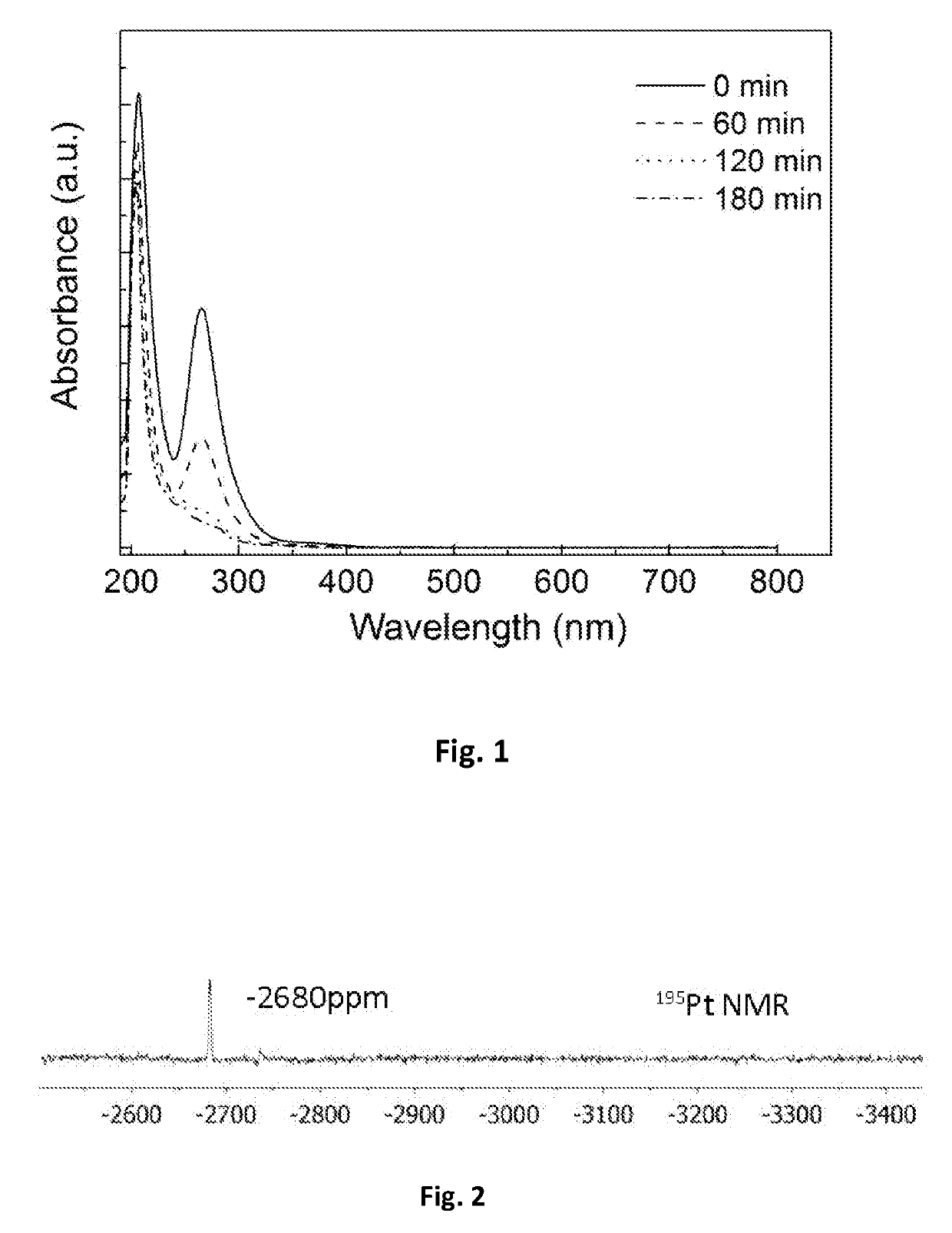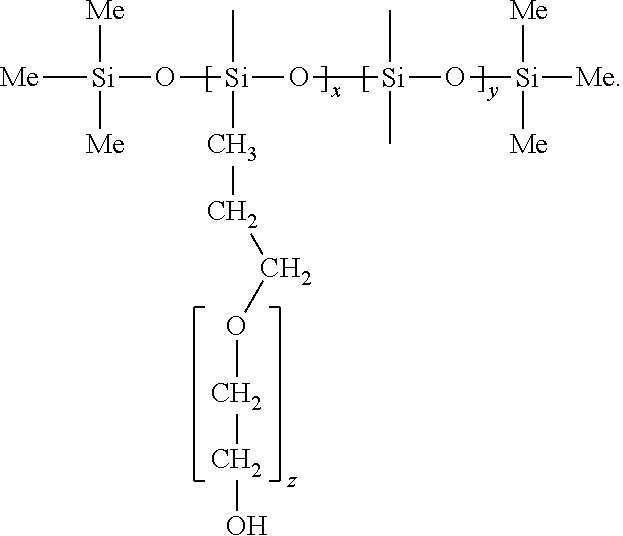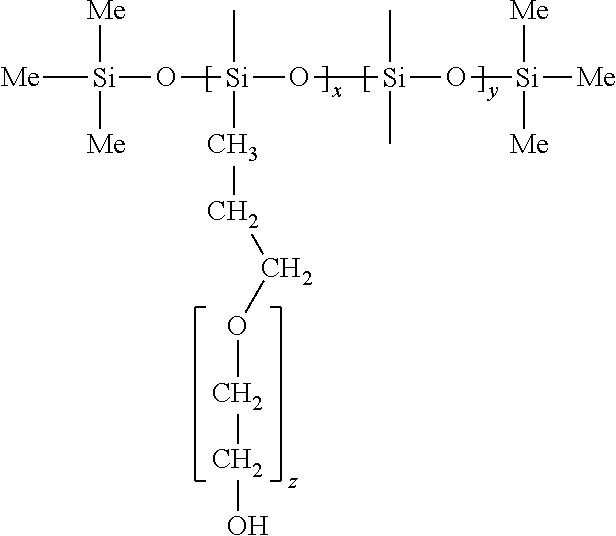Material comprising precious metal isolated atoms stable in solution
a precious metal and isolating technology, applied in the field of new materials invention, can solve the problems of high price of precious metals, increased turnover frequency of reaction by 2-3 times, and monoatomic material obtained by solid surface dispersion method, and achieve good stability and high load capacity
- Summary
- Abstract
- Description
- Claims
- Application Information
AI Technical Summary
Benefits of technology
Problems solved by technology
Method used
Image
Examples
example 1
[0025]Preparation of isolated platinum atoms in solution: 0.6465 g polyethylene glycol-polysiloxane block copolymer, 135 ml ethanol, 10.2 ml water and 4.8 ml chloroplatinic acid solution with a concentration of 0.018404 mol / L are thoroughly mixed, and then the temperature is raised. The chloroplatinic acid was completely reduced under reflux condensation at 105° C. for 3 hours. It was verified by UV-Vis and 195Pt NMR that a isolated platinum atomic material was synthesized. The UV-Vis absorption spectrum (FIG. 1) shows that chloroplatinic acid is completely reduced. (Note: The UV absorption peak at 265 nm represents the absorption peak of PtCl62− ion, and the disappearance of the UV absorption peak indicates that chloroplatinic acid is completely reduced.) 195Pt NMR spectrum (FIG. 2) indicates: platinum atoms in the reduced state form. (Note: K2PtCl6 has a 195Pt NMR at 0 ppm, PtCl42− has a peak at −1617 ppm, and isolated Pt atoms have a 195Pt NMR peak at −2680 ppm. At the same time,...
example 2
[0026]Preparation of isolated platinum atoms in solution: 0.6465 g polyethylene glycol-polysiloxane block copolymer, 4.05 mg ethanol (the ratio of the amount of ethanol to chloroplatinic acid is 1:1), 145 ml water and 4.8 ml chloroplatinic acid solution with a concentration of 0.018404 mol / L are thoroughly mixed (the ratio of the amount of ethanol to water was 1:105), and the temperature was raised. The mixture is refluxed and condensed at 105° C. for 3 hours to completely reduce chloroplatinic acid. It was verified by UV-Vis and 195Pt NMR that a isolated platinum atomic material was synthesized. The UV-visible spectrum is shown in FIG. 1, and the 195Pt NMR spectrum is shown in FIG. 2.
example 3
[0027]Preparation of isolated platinum atoms in solution: 0.6465 g polyethylene glycol-polysiloxane block copolymer, 148.5 ml ethanol, 1.02 ml water and 0.48 ml chloroplatinic acid solution with a concentration of 0.018404 mol / L are thoroughly mixed (the ratio of the amount of ethanol to water is 30:1), and the temperature was raised. The mixture was condensed and refluxed at 105° C. for 3 hours to completely reduce chloroplatinic acid. It was verified by UV-Vis and 195Pt NMR that a isolated platinum atomic material was synthesized. The UV-visible spectrum is shown in FIG. 1, and the 195Pt NMR spectrum is shown in FIG. 2.
PUM
| Property | Measurement | Unit |
|---|---|---|
| 195Pt NMR | aaaaa | aaaaa |
| hydrophilic | aaaaa | aaaaa |
| weight ratio | aaaaa | aaaaa |
Abstract
Description
Claims
Application Information
 Login to View More
Login to View More - R&D
- Intellectual Property
- Life Sciences
- Materials
- Tech Scout
- Unparalleled Data Quality
- Higher Quality Content
- 60% Fewer Hallucinations
Browse by: Latest US Patents, China's latest patents, Technical Efficacy Thesaurus, Application Domain, Technology Topic, Popular Technical Reports.
© 2025 PatSnap. All rights reserved.Legal|Privacy policy|Modern Slavery Act Transparency Statement|Sitemap|About US| Contact US: help@patsnap.com



